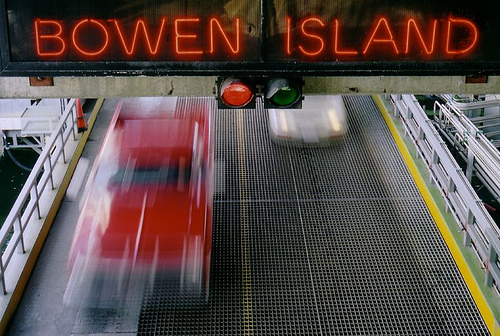|
|
Lack of Data
|
Data for various environmental features and hazard areas, along with better mapping of development (including building footprints), would be required for a complete analysis. Recommended studies include:
o Geotechnical studies including slope stability (for hazard analysis)
o Seismically unstable lands
o Habitat corridors
o Comprehensive species inventory
o Aquifer mapping and aquifer capacity
o Building footprints
o Land suitable and unsuitable for soil absorption system septic fields (development should be restricted where SAS is not implementable)
o Full inventory of good agricultural soils
o Information on the types and locations of local businesses
o Mapping of features lending to “rural character” such as hedgerows, fences, ditches, etc.
With these additional data, better hazard, compactness, character and environmental components could be produced.
|
Data Quality
|
Because nearly all the data in the Bowen Island Map atlas has been assembled from different sources, the quality naturally varies, and the reasons for collection are very diverse. This is sure to have introduced error into the analysis, though it is difficult to ascertain whether the errors introduced will have affected the outcome. Most of the data is collected at a small enough scale that some inaccuracies in terms of matching the features on the ground are likely masked, but more serious errors including omissions are unknown.
The temporal resolution of the data is also problematic. Many of the data, including the SEIBOWEN (sensitive ecosystem) data set were collected during the late 70s, according to the map atlas. Many other layers are insufficiently documented, so the date of collection is unknown. Some hydrological features, for example, are represented differently in several different datasets. In these instances, the data set which seemed the most complete and comprehensive was used, but it is clear this is a source of error.
|
SIMPLIFICATION AND ERROR PROPAGATION IN MCE
|
Because it is not possible to include, or even to list, all of the data relevant to an analysis of this complexity, simplification is a given. With too much information, the analysis isn’t likely to be useful, nor will it be with too little information. For this MCE, twenty two separate layers were used as either factors or constraints, corresponding to four objectives. The selection of these objectives is inherently value laden—a developer or an environmentalist may have selected differently. Ultimately, the best way to deal with this issue of simplification would be to acknowledge the inherent bias, and prepare a number of separate analyses which represent different viewpoints.
Bias is also evident in the analyses themselves. Control points for many of the operations used were chosen rather subjectively, though the nature of the relationship may not be precisely linear or sigmodal. It is not clear, for example, at what distance a factor ceases to have an effect. The use of variable buffers instead of fuzzy operations might have produced a more accurate result, but detailed information that would have enabled this is not available.
The assignment of “suitability scores” to qualitative data is also a simplification which is value laden. Bowen forests, for example, were assigned suitability scores on a scale from 0-255 based on their age, but this process is subjective.
|
POLICY RECOMMENDATIONS
|
From the outcomes of the spatial analysis, three distinct areas which are most suitable for further development emerge. These correspond roughly to Snug cove and surrounding area, Cowen Point, and Bluewater. By using transfer of density rights and other planning tools, it is recommended that Bowen Island seek to concentrate future development in these areas, preserving rural character and environmental features on the rest of the island. The characteristics and possible planning policies which can be applied in each of the three areas are reviewed bellow.
Snug Cove
Development in and around Snug Cove presents the greatest opportunity to increase density on the island without negative repercussions for island ecology. Snug Cove is also the only area with city septic, which eliminates the impediment to development of soil with adequate absorption. The area to the South-West of Snug Cove could be permitted higher density development in the form of single family housing, with ancillary units for affordable housing provision. A maximum lot size set at .4 hectares (1 acre) in this area would greatly increase density in the area. This "valley" region presently consists of large lot rural development and has the capacity to accommodate a significant amount of growth within closest proximity to the Snug Cove area (reducing demand for transportation, services, and the impact on the character and environment of the Island).
Cowen Point / Fairweather
This area is suitable for rural residential development and has a significant capacity for expansion. Only a handful of lots are presently less than .5 hectares; most tracts are many times larger and could be subdivided.
Despite its capacity for development, it is recommended that this area be developed only after the already impacted areas, as it has poorer transportation links and access to services.
Bluewater / Bowen Bay
Residential development is already occurring in this area, and should be permitted to continue. Lot sizes averaging 0.5 hectares are recommended as this is consistent with the recent development in this area. It should be noted that there are presently no retail shops or services on this side of the island, which results in a automobile dependency for residents of this area. It is recommended that development of this area, for this reason, be phased to occur after Snug Cove is closer to capacity.
|
|
|

